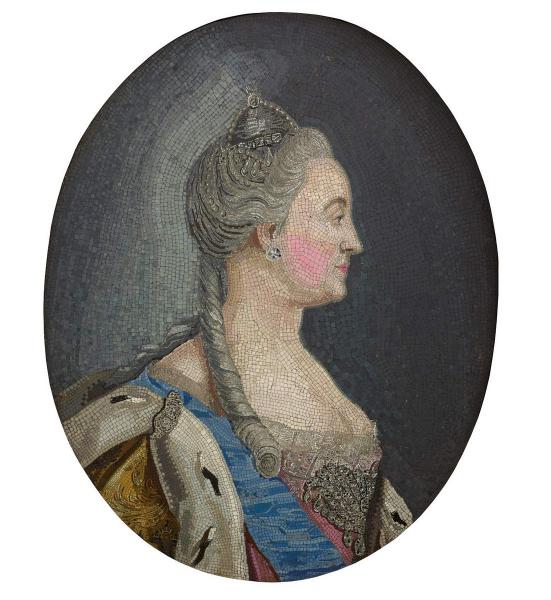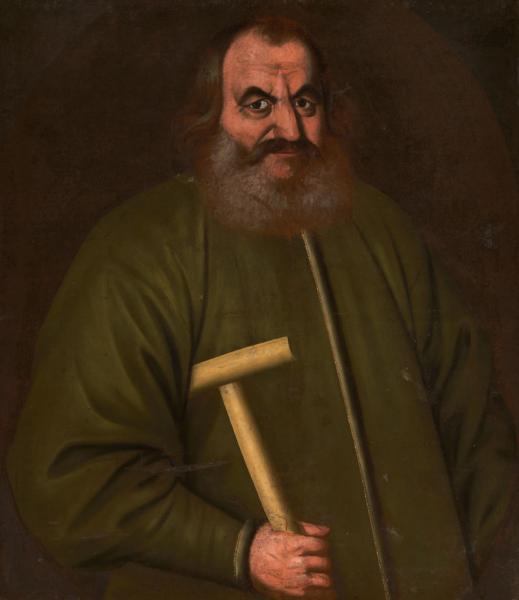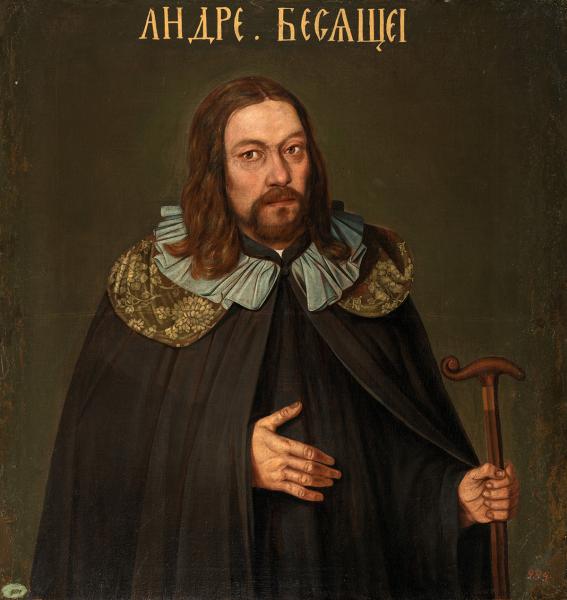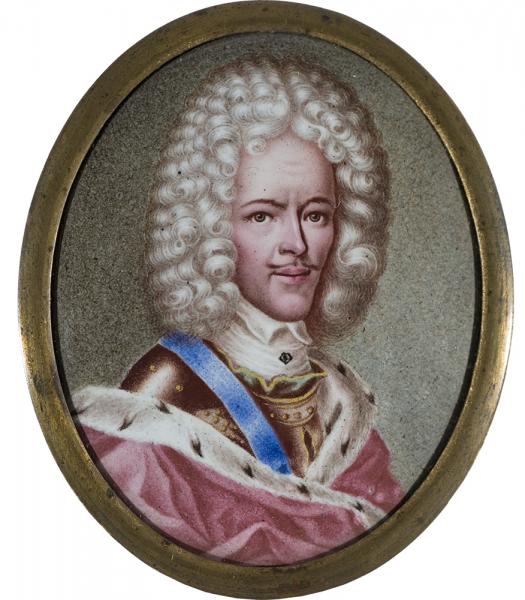The artist is unknown
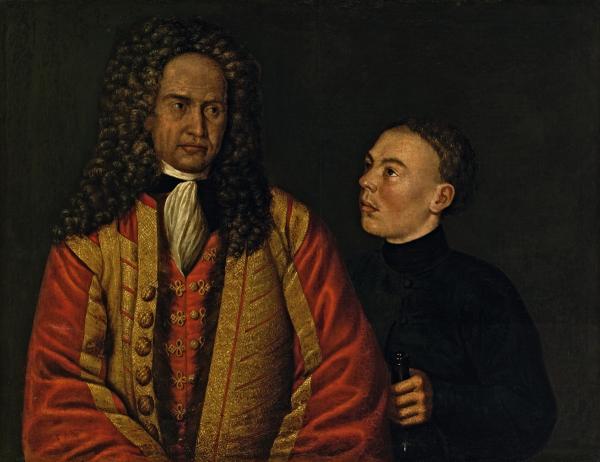
Alexey Nikiforovich Lenin (years of life are unknown). From 1693 – cooking.
Published for the first time in the Almanac “Art Treasures of Russia” for 1903 "Portrait of two jesters" for many years did not have the names depicted. Only in 1965 he was correlated with a double portrait, which included in the inventory of the Preobrazhensky Palace of 1739 (according to the “inventory” of the Preobrazhensky Palace, in the front was the “picture of Alexei Lenin with a lad”), and returned the original name to him (Molieva, Belyutin. WITH. 14). There was an opinion that this lad is Kalmyk, therefore, in literature, the work is sometimes called “portrait of Alexei Lenin with Kalmyk”. "Clap" Cut into the bracket like a courtyard, but unexpectedly dressed in a black cassock over a dark green caftan. However, the technological study made it possible to establish that the robe of the Kalmyk and the background of the portrait are fully rewritten. In hand "Kalmyk" bottle. Therefore, according to the researcher, this portrait easily fits into the “all -otorous” series. E. AND. Gavrilova specified the definition of the character, discovering in the boyar books a mention of Alexei Nikiforovich Lenin, who formed in 1693 the cooking “in the beginning people” and in 1707 “die”. (Gavrilova 1975. WITH.53-54). N. X. Unknown artist. SPb, 2012. WITH. 33. Therefore, the portrait could be written no later than this time.
“Preobrazhenskaya series” – the rarest monument of early secular art in Russia. Her characters were traditionally called images of the jesters of Peter I. The name “Preobrazhenskaya series” was proposed. M. Moleva and e. M. Belyutin and arose in connection with the inventory of the Preobrazhensky Palace near Moscow, which included portraits (“persons”) Yakov Fedorovich Turgenev, Andrei Brownie, Matvey Filimonovich Naryshkin, as well as the “Picture of Alexei Lenin with Cloral”. The closest associates of Peter the Time “I began glorious affairs”, they were participants in the unique association. Documents drawn up by the king himself testify to what it was called “the most crazy crazy cathedral of the most all-food prince-papa”. Researchers unanimously attribute the beginning of “cathedrals” by the end of the 1680s-the beginning of the 1690s.
The basis of the series is eight portraits, the researchers supplemented it with a portrait of the “First Russian Soldier” by Sergey Leontyevich Bhavostov. However, apparently, the portraits were at least eleven, in the inventory of 1739 the “person of Prince Fedor Yuryevich Romodanovsky”, “Person of Nikita Moiseevich Zotov”, “Person of Ivanovich Buturlin”, “The character of the fool Timokhi”, whose location is unknown, were also included in the inventory of 1739.
It is believed that the series was created for the new palace, built in 1692 on the shore of Yauza near the soldiers’ courtyards of the Preobrazhensky regiment. Portraits were there, apparently until the last quarter of the 18th century, and when the palace was dilapidated, they were transported to St. Petersburg, stored in the meeting of the imperial Hermitage, and then were transferred to the Gatchinsky Palace.
In 1929, almost the entire “Preobrazhenskaya series” entered the Russian Museum, but two years later, portraits of the stolnik and. A. Shchepothev and unknown in a brown fur coat are transferred from timing to the GTG.
The main one for the dating of all known portraits of the series is the following historical fact: images of bearded people (Turgenev, Naryshkin or Verigin) could be executed until August 26–30, 1698, when Peter returned from abroad began to cut his beards with his boyars who gathered for the meeting king in the same Preobrazhensky Palace. Thus, the dating of the series is the most likely-the 1690s (until 1698). Most researchers believe that the portraits of the series were written by Russian masters, painters of the arms chamber, whose services Peter used especially widely in the 1690s-early 1700s. N. X. Unknown artist. SPb, 2012. WITH. 23.
The names of the depicted for a long time remained unknown. However, according to the “inventory” of the Preobrazhensky Palace, in the front was the “Picture of Alexei Lenin with a lad”. This record was correlated with a long-known double portrait from the collection of the Russian Museum and evidence was identified only in the 1960s. More recently, according to the documents, it was found that a. N. Lenin since 1702 was a cook “in the beginning people” and in 1707 “die”. Therefore, the portrait could be written no later than this time.
